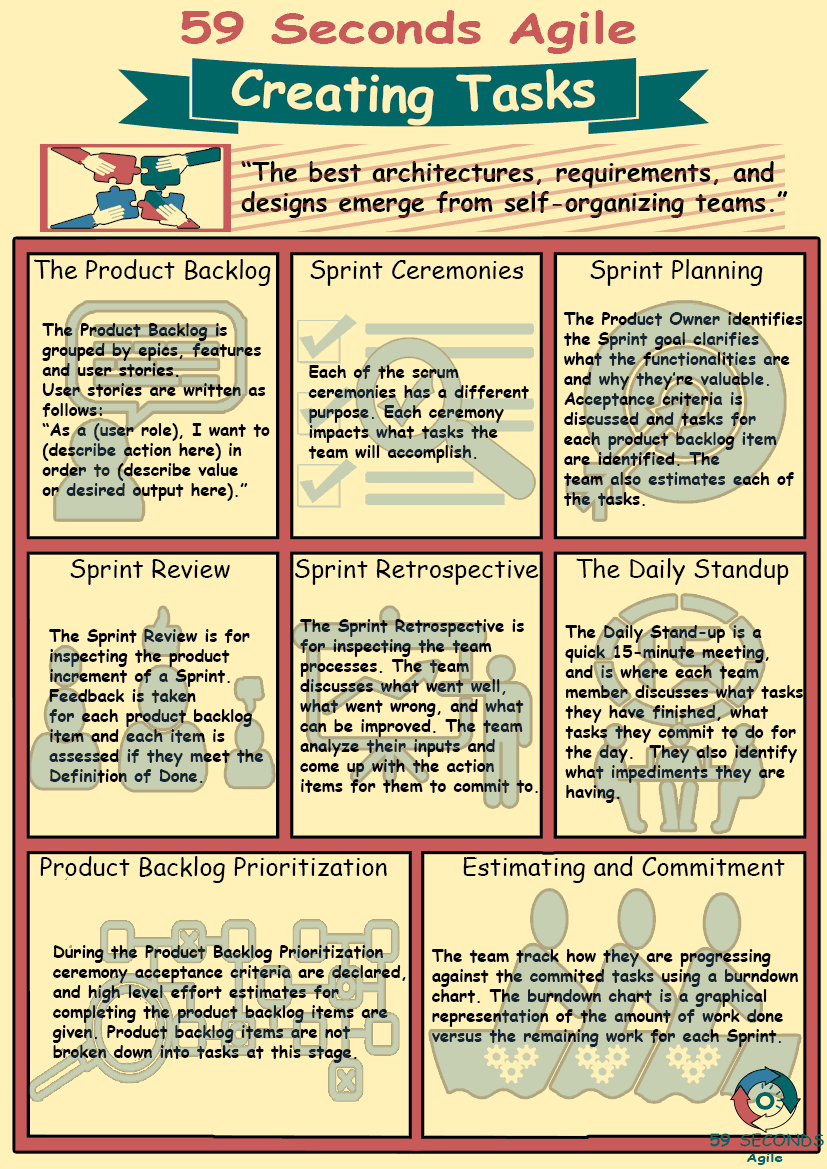This article looks to discuss ‘Writing Good User Stories and Tasks’. It provides an introduction to the Agile User Story and how to write good stories, along with the role of Agile Tasks.
Agile User Stories and Tasks
A 59 Seconds Agile Training Video
Continue to Part 6 Below
Writing Good User Stories and Tasks
A 59 Seconds Agile Article
This article provides an ‘Introduction to Writing Good User Stories and Tasks’ and looks to discuss what a user story is and what and Agile Task is.
Writing Good User Stories: Splitting User Stories
Splitting up user stories into different tasks allows you to easily estimate the effort that will go into it. As each task is created, the tasks go into an overall task list.
The task list should contain the user story the task is tied to, a task number and description, the estimated effort the task will take, the actual effort, the task’s status, any dependencies the task has, any other tasks dependent on this particular task, and the person who has taken on the task.
Keeping the task list clear and updated will give any member of your team the opportunity to get a complete understanding of the tasks and features in the current sprint.
The task list also helps your team to foresee potential obstacles and roadblocks and plan for them in advance. A major part of these obstacles will take the form of dependencies. There are four types of dependencies to check for:
- external, or dependencies outside the scope of the team such as another scrum team or a vendor;
- internal, or dependencies within the sprint such as a database that needs to be refreshed;
- mandatory, or dependencies that are non-negotiable such as a change to tax legislation;
- and discretionary, or dependencies that the team has decided will benefit the project such as changes to the development process.
By taking care to identify the dependencies tied to each task, your team will be able to figure out the best possible order for the tasks to be completed in, so that the obstacles will be cleared before the team reaches the dependency. This is a critical part of ensuring the effectiveness of tasks for your team.
Remember, the creation and estimation of tasks aids the creation of value.
Continue Reading —> Next
The Agile User Stories and Tasks
A 59 Seconds Agile Video Animation
Continue Reading —> Next
User Stories Applied
A 59 Seconds Agile Book Review
User Stories Applied by Mike Cohn is one of our favourite books on Agile User Stories. The book starts with an overview into user stories, and details what a user story is and the different aspects of them. He then discusses how to go about writing a user story, and provides details of the INVEST criteria that can be used to determine if the story is meeting all of its objectives. Next Mike gives an in depth discussion of who user stories are written for and where to begin when gathering the details for them. The book then discusses acceptance testing user stories, including how to go about specifying these criteria and the responsibilities of the development team and customers during this process.
Continue Reading —> Next
The Agile Frameworks
A 59 Seconds Agile Infographic

Continue Reading —> Next
Agile Scrum Master Training Course
Continue Reading —> Next
Our Favourite Agile Books
We found these books great for finding out more information on Agile Scrum:
